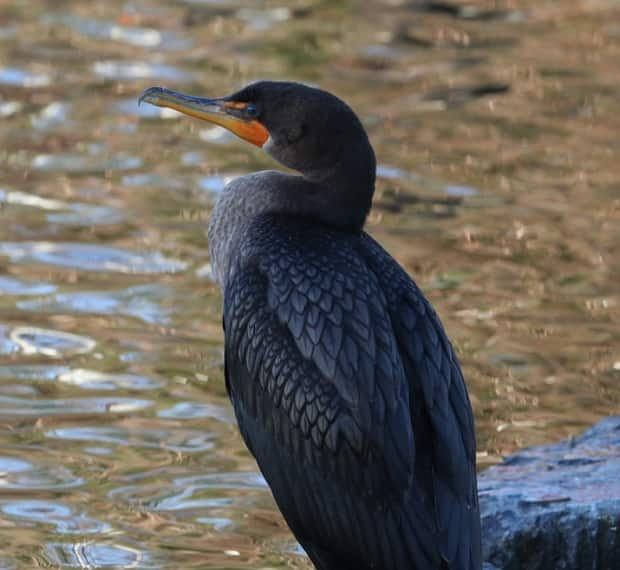Shagged up: Cormorants gorge on Bowring Park trout population


What were once rare sightings on Newfoundland's rivers appear to be more common, as cormorants are being spotted in Bowring Park and around the Waterford River.
While birdwatchers may welcome the opportunity to see the seabirds close to home, and without having to scout them out along their typical coastal homes, cormorants are cause for concern among anglers who say they're contributing to the depletion of the Waterford River's trout population.
Cormorants — commonly called "shags," due to their being a source of frustration for hunters looking to bag more palatable seabirds — usually leave the island in winter and return to nest in the spring.
Now, with warming temperatures and a new food source, a growing number of the birds appear to be overwintering in the park, well away from the coasts bordering St. John's and neighbouring communities.
Bruce Mactavish, an environmental consultant and avid birdwatcher, says he can see the cormorants from his home along the Waterford River — something that would have been a rare event just years ago.
"It used to be a scattered double-crested cormorant here in the winter, which was unusual," he said.
"And then they started showing up at Quidi Vidi Lake, and then Bowring Park."
This winter, Mactavish counted 28 cormorants at one time sitting on the rocks. In an interview, he described that as a dramatic increase over the past few years.
They have to eat, and there can only be so many trout there for 20-plus cormorants. - Bruce Mactavish
"One time double-crested cormorants were never here in the winter. It was a rare bird anywhere in the province, say from November till mid-April."
As for the cause for the cormorant incursion, Mactavish thinks the warmer winters are playing a part.
"Now that winters are milder, these double-crested cormorants really started coming around St. John's, and they discovered that there was a lot of trout in the Waterford River."
It's no doubt that the cormorants are hitting the trout population in the Waterford River particularly hard, Mactavish said.
He doesn't see how this can continue, year after year.
"They have to eat, and there can only be so many trout there for 20-plus cormorants," he said. "It's hard to know where it's going to go, and it can't just keep on increasing."
Birds pose concern for anglers
Barry Fordham, a director of the Newfoundland Outdoor Heritage Coalition, said he and the organization have been advocating for a monitoring program since the issue of inland cormorants was first brought up at a meeting of the Salmonid Association of Eastern Newfoundland.
From what he's heard from anglers, the trout populations in the Waterford River are low, with many having witnessed birds feeding on the fish in the area.
Fordham believes the cormorants are playing a big role.
"There used to be a very healthy population of brown trout, or sea-run trout," he said. "Even up in Bowring Park, in the pond there, you could always see trout."

While damage to trout populations is one concern, Fordham suggested that the cormorants could also factor into a bigger mystery: the drop in the island's salmon returns.
Juvenile salmon, called smolts, leave their rivers to spend years at sea before returning to repopulate. Fordham said currently salmon are going to the ocean, but they're not coming back.
Many of those rivers, Fordham suggested, have predators like cormorants at their mouth.
"Have those birds now learned — ingrained in them — that at that time of the year that's when all the smolts are coming out, and they're having a field day?"
Cormorant predation impacting trout
There are other factors which might contribute to the decline in salmon returns, Fordham said, including low capelin stocks, and warming ocean temperatures as a result of climate change.
But increased predation from cormorants, he believes, is playing a big part.

"It could go away on its own," Forham said. "And the way that I think that would happen would be that there will be very little food for them, and they'd have to move on."
There are measures which could be taken to deter the presence of the cormorants, which Fordham said have likely lost their fear response towards people.
Even efforts to just scare them off would make the birds a little more cautious, he said.
"Which means that they may not be able to expend all that energy to fly in there, only to have to fly away again because of the human presence."

